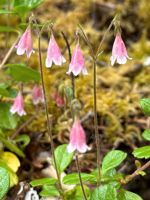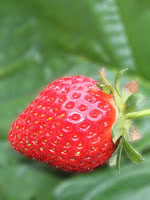Mon-Fri 9am - 5pm Mountain time
Seascape Strawberry vs Twinflower
Linnaea borealis
Fragaria x ananassa Seascape
CUSTOM GROW
Twinflower is a native, trailing evergreen ground cover known for its delicate flowers that grow in nodding pairs. These pale pink blooms are described as being sweetly fragrant, attracting native bees and other pollinators.
Growing in cool, moist, acidic soils, the trailing stems form roots as they spread and start to form mats across the forest floor. Due to its woody stem, it is technically classified as a shrub and often referred to as a subshrub or dwarf shrub. This species is well-suited for naturalization, restoration, and conservation projects.
Twinflower (Linneae borealis) was named in honour of Carl Linnaeus, who adopted it as his personal emblem.
The Seascape Strawberry is a cold-hardy perennial that produces large, sweet cherry-red berries that are usually ready for harvest from late spring to early fall. This variety is an Everbearing (Day Neutral) strawberry with small white flowers. It is typically more productive than other cold hardy strawberries.
The Seascape Strawberry is a self-pollinating variety, meaning it does not require a second plant nearby to set fruit. This plant produces an above average number of runners that grow quickly into new plants.

